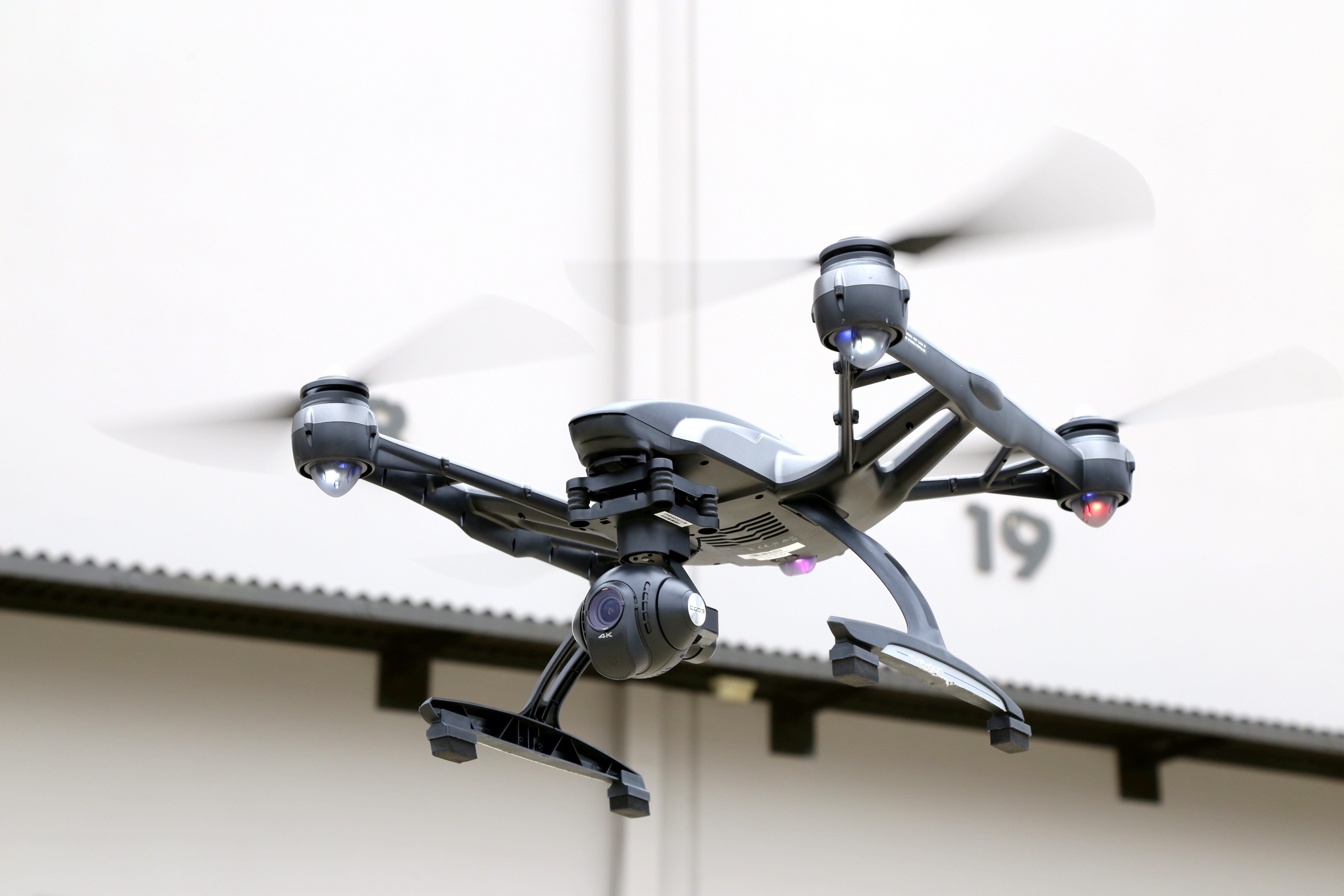
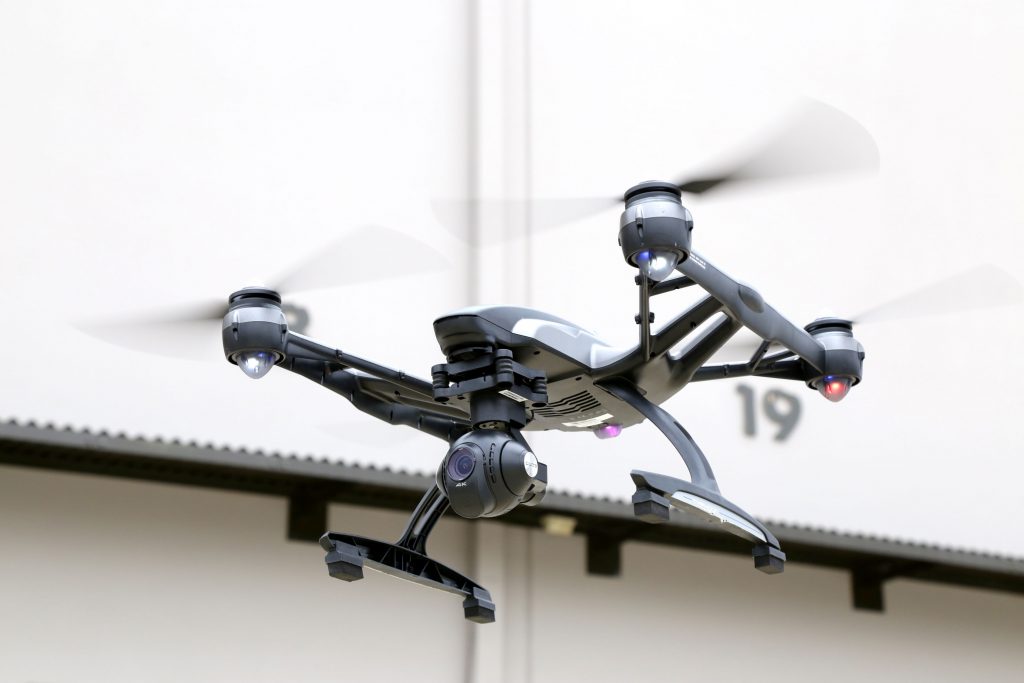
With the constant buzz around DJI these days, many newcomers to drone piloting don’t thoroughly vet all their options, much to their own detriment. Those familiar with the quadcopter industry are well-versed in the arsenal that Yuneec(pronounced “unique”) has amassed, from their miniature selfie drone Breeze, to their full-carbon fiber H920 hexacopter built for professionals, to their Typhoon Q500 4K photography quadcopter.
Undoubtedly though, the most notable creation to come from Yuneec is their Typhoon H Pro with Realsense™, which comes packing Intel’s advanced RealSense™ artificial intelligence technology. That’s right: the Intel that makes CPUs plugged some of their circuitry into one of Yuneec’s higher end drones and took “intelligent flight” to a new level. The upgrades give the quadcopter 3D modeling and depth sensing capabilities, with the ability to remember the models it creates. Pair this with smart obstacle avoidance and human motion tracking, and you have a UAV that can create a dynamic flight “Follow Me” flight path which reacts to environmental changes in real-time.
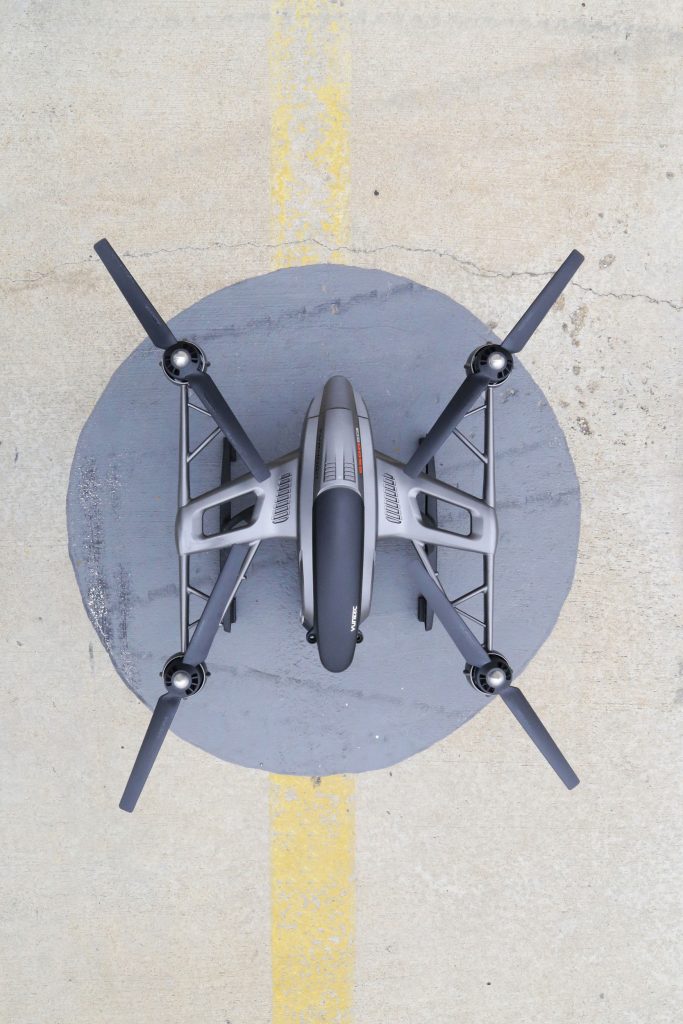
Make no mistake, if you haven’t heard of Yuneec it isn’t because they are the new kid on the block. Yuneec isn’t playing in the shallow end of the drone pool, and in fact have been making electric gliders for years. Their drone technology is widely known in the commercial sector, and their specialized cameras for infrared imaging (Exothermic Imaging), professional cinematography, and unique design is what sets them apart from the rest of the pack. We took their 4K Q500 to the skies to get a better feel for what their everyday consumer model is capable of.
Design and specs

The Typhoon Q500 has an estimated 25 minute flight time, which it squeezes from the 5,400mAh 3S 11.1V LiPo battery. The arms (booms) use a triangular scaffold design to connect the right and left side motor pairs to the body at one point each, which isn’t nearly as common as the traditional “straight pole” arms.
Those booms stretch out for a whopping 16.5” wingspan, and the landing gears set the overall height at 8.3”, which makes for a less-than-compact package and verifies that the boom design was intended for weight regulation. That weight comes in at 3.75lbs, which isn’t massive but does fall higher on the scale for consumer drones. The flight ceiling tops out at 400 ft., and the power to the motors lays down a climb rate of 3m/s and a max speed of 8m/s (17.9 mph). The four motors are quite large, which makes me think that they could have gotten an even more powerful unit from a reduced wingspan and lighter body, probably increasing the flight time as well.
The transmission frequency is 2.4GHz, which offers a substantial distance for drone travel and is standard on most out there. The gimbal is a modular design, which can be removed and plugged into the SteadyGrip companion handheld unit or swapped for an upgraded model Yuneec offers.
Video
The spherical CGO3 camera rotates on a 3 axis gimbal, capable of recording 4K video at 30fps and even 1080p at 120fps for slow motion shots. There is a microphone included on the gimbal which makes sense for use on the SteadyGrip, but would not provide much value when attached to the drone. Fortunately, the microphone is only an option when you hook up the SteadyGrip, so you don’t end up with scratchy audio over your flight footage.
The gimbal pitch is smooth to tilt from level to -90° via the remote knob, and the response time is delayed so abrupt movements still translate to a fluid motion. The picture remains level throughout flight and fares pretty well in windy conditions too, so even when the drone bounces around the feed looks reasonably balanced. The quality and setup overall is very good, and I’d consider this a solid performer in the video department. Yuneec claims that the max video transmission range is 400 meters in optimal conditions, using the 5.8GHz video downlink.
Camera

The 12MP camera comes with an anti-distortion 115° FOV 14mm f/2.8 wide angle lens, which is designed to keep the image flat and prevent the fisheye distortion at the edges. The camera has adjustable white balance, exposure, shutter speed, ISO, resolution, and frame rates while in flight, although when tweaking with settings there is downtime where you cannot control the drone so you don’t want to spend too much time in the menus.
The modular camera can be removed and added to the SteadyGrip hand gimbal, which pairs with the CGO3 app on your phone and extends the utility of the device when you aren’t up in the air. If you decide to upgrade the camera, Yuneec’s other camera lines have thermo imaging, advanced photographic, and geo mapping features if your use for the drone changes over time.
The gimbal is smooth and works well, although the one thing about the camera I found mildly inconvenient is capturing stills simultaneously while recording video. In order to complete this you need to stop recording, snap a photograph, wait 1-2 seconds for it to process, then either switch back to recording or photography mode. This isn’t a huge issue since you can always snag stills from a video feed, but it would be nice to not need to go through these steps. Again, the quality is great and the photos came out crisp, clear, and well-defined.
Drone control
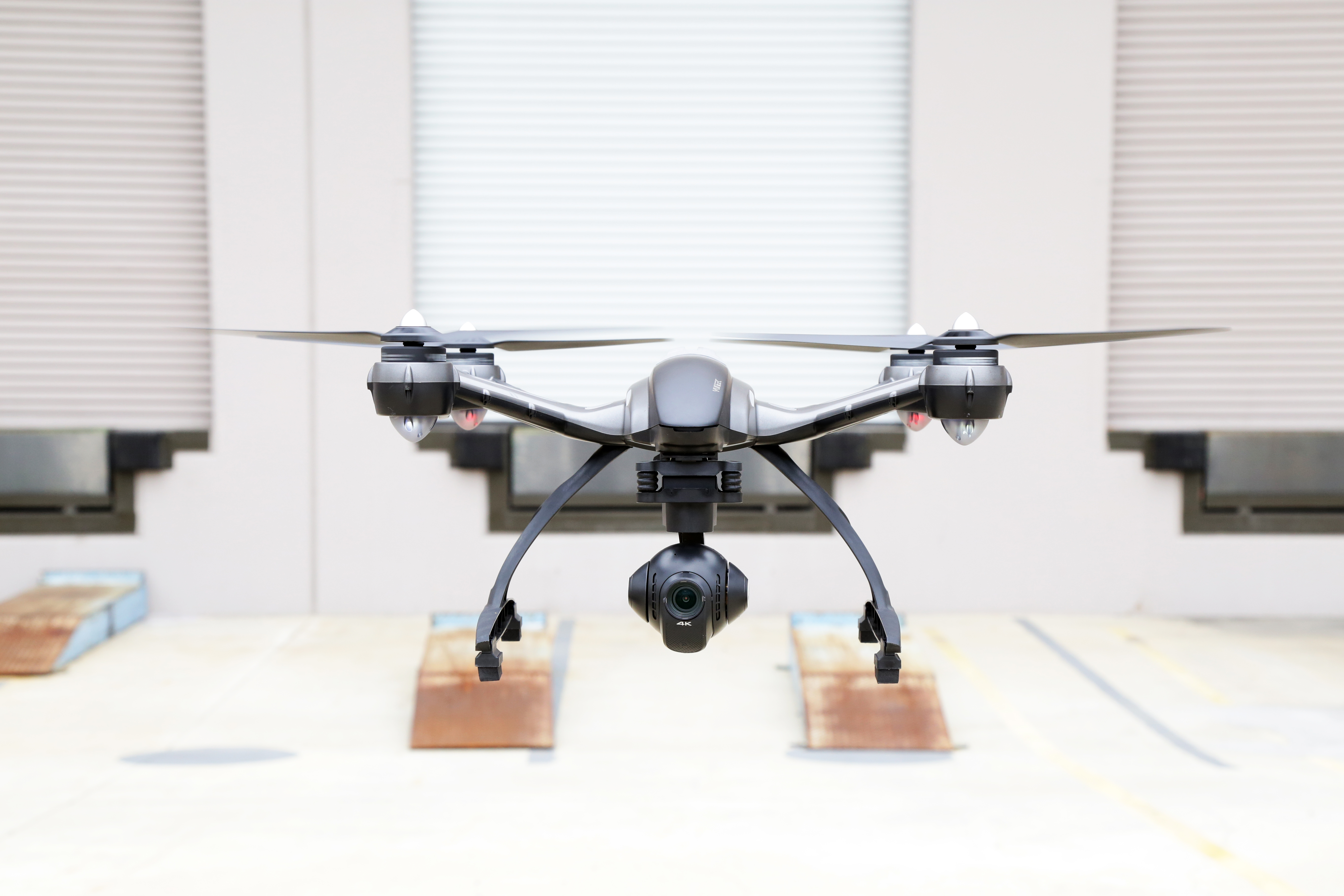
GPS positioning for a non-racing drone over $200 is a must-have in my book, and Yuneec seems to have done a decent job with theirs here. The GPS and radio connections are quick to pair when the devices are fired up, and the signal is pretty reliable around even large buildings. The Typhoon is quick to respond to control input, and has some pep to it when you go full stick in any direction.
There were a few times that the drone would drift around at dead stick, and I often felt that the control was better at 20 feet altitude plus. This could be a result from strong propwash as the props themselves are pretty large. In winds of about 10mph the overall ability to hold position was not too bad when it was clear that the unit was behaving as intended, with a few feet drift in any direction. Sometimes there was a little unwanted lateral movement that wasn’t nearly as controlled as I would like for a drone of this size, and during flight under about 20 feet the movement was more present. Yuneec states the max control range under optimal conditions is up to 800 meters, although I didn’t push it to their stated max.
Flight features
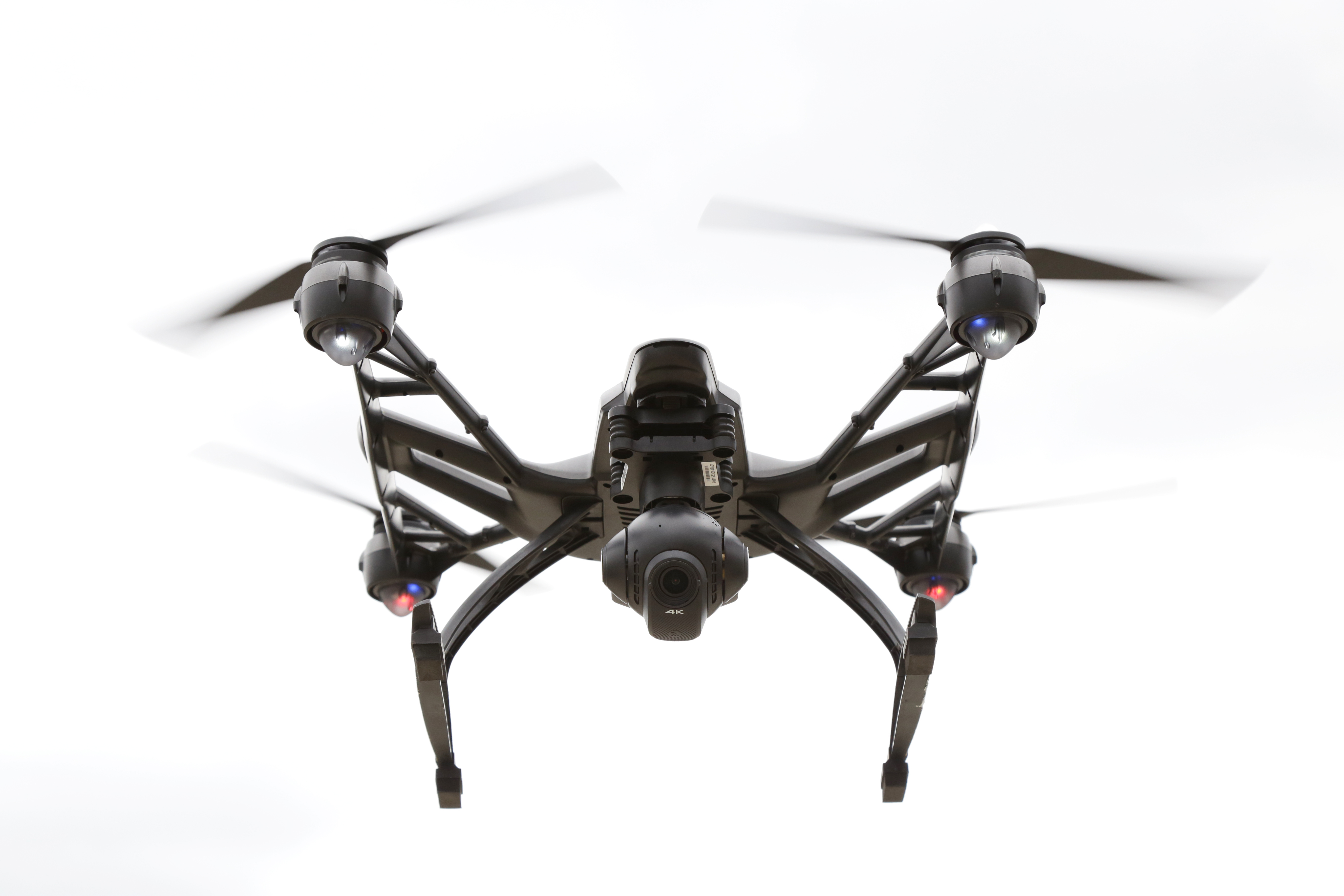
The Typhoon Q500 has a few features that make for some fun piloting, most notably their “Watch Me”, “Follow Me”, and “Return to Home” modes. “Watch Me” keeps the camera trained on the pilot with them in frame, so long as the angle doesn’t become too sharp for the camera to follow. This makes for some smooth circle shots and rail shots but considering the touchscreen controls it would be nice to see them add a subject selection feature, instead of only watching the pilot.
The “Follow Me” feature keeps the drone tethered to the pilot, where it follows along and maintains a consistent distance for some neat action shots. This is a fun mode to play with, and the drone was very responsive to changing pilot positions. One thing to note is that the altitude is not adjusted in this mode, so increases or decreases in elevation will not be automatically accounted for and must receive pilot input for correction.
The “Return to Home” function is a solid feature to have on any drone, in the event that it gets out of control or the pilot loses sight of it. The home point is calibrated and set at the ‘power-on’ point, so it is best to not power on the unit until you are at your desired takeoff/landing point. The stated return to home area is within 13-26 feet of the original location, so depending on the available GPS signal and location it might be best to avoid this unless there is plenty of open space.
Another feature is the “Smart Mode” vs. “Angle Mode” distinction, which can cause some confusion if you don’t know which is which. This functionality basically alters the input from the right hand control stick, and changes how the drone responds to different directional controls. “Smart Mode” uses the direction of the stick relative to the pilot regardless of which way the drone is facing. What that means is that if you have this mode enabled and the drone is facing towards the pilot, a roll stick to the right would equate to the Typhoon rolling to its own left, and visa-versa for the opposite direction. Inversely, in “Angle Mode” — the typical method of control —the direction the drone nose dictates the response for left and right roll input.
ST10+ transmitter
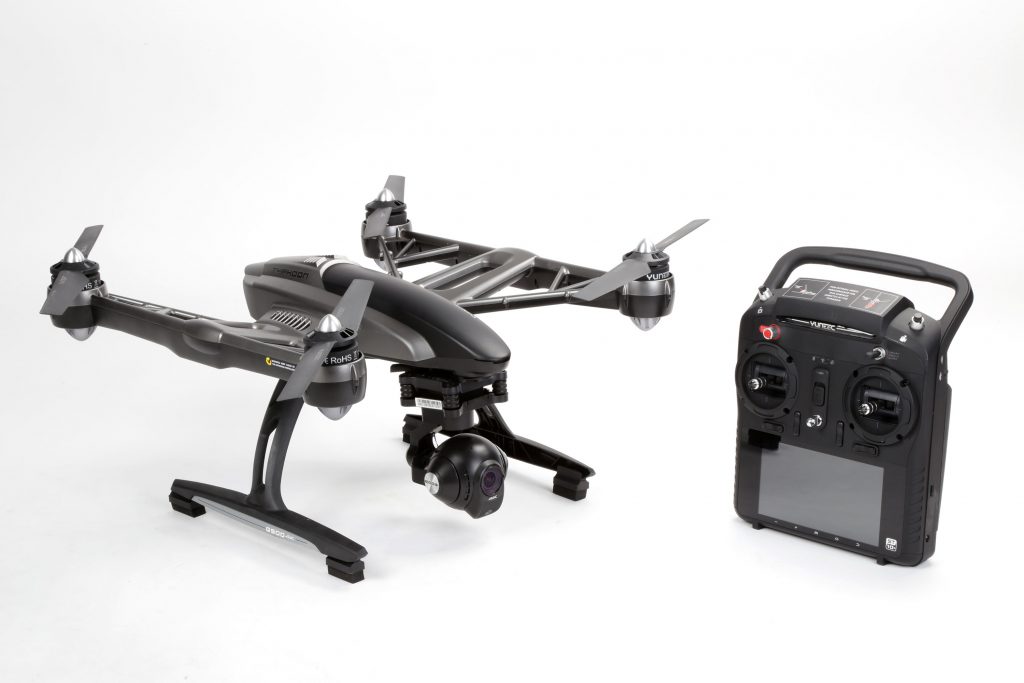
The Typhoon Q500 utilizes Yuneec’s ST10+ “Personal Ground Station” transmitter, which is an all-in-one unit with a built-in touchscreen. The 5.5” screen is powered by Android, and navigating through the menu options is quick and simple enough to do mid-flight without becoming a distraction. I’m a huge fan of integrated FPV screens on radio controllers, as they negate the need for additional apps to plant themselves onto my phone and drain my battery.
The layout is functional, and all the controls are easy to access without switching hand positions, despite the initial appearance of lacking an ergonomic layout. The construction is sturdy without being overly hefty, and the design is very well-executed. One improvement for convenience would be the screen placement could be better optimized at the top of the transmitter, to limit the craning downward of the eyes and neck.
While the transmission frequency is 2.4GHz, Yuneec added a standard 5.8GHz video downlink, which ensures a crisp and clear FPV feed. This is a little detail that is appreciated, because while the feed comes through strong even with interference from buildings and telephone lines, the safety of having solid eyes is critical when you get a few hundred feet into the sky. There is a slight delay between the live action to the on-screen display of approximately ¼ second, but the image quality is solid nonetheless and at the speeds possible with this unit aren’t a major concern.
Buy Yuneec Typhoon 4K Q500 refurbished for $450
Land recording
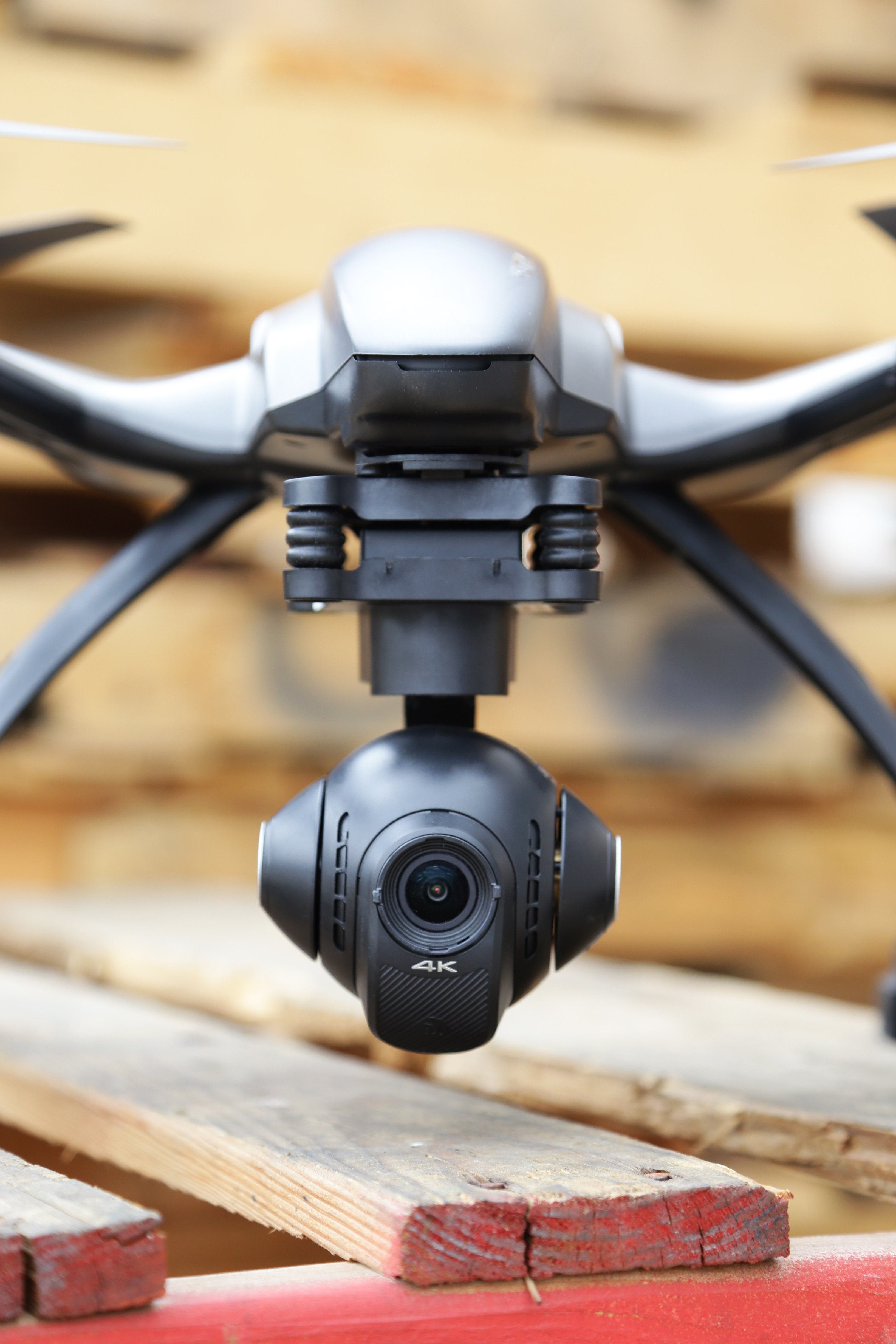
Yuneec included their SteadyGrip mount as a supplemental recording device, for when the situation calls for recording something from the ground. This is similar to what GoPro tried to go for more recently with their Karma drone, had they not suffered a series of crushing defeats with their drone reliability. The idea is great, extending the use of the device beyond one specific application and helping to
The SteadyGrip is pretty simple, with a knob for pitch control and a button to switch between “Pitch Follow Mode”, which tracks the direction the unit is facing, and “Angle Mode” to lock in a specific direction. The pitch control is smooth, similar to the gimbal operation on the drone itself. The SteadyGrip operates in conjunction with the CGO3 mobile app, which controls the camera settings and video/photo capture. It’s nice to have the app connect via the gimbal’s Wi-Fi, which keeps things clean. The unit itself operates off eight AA batteries, which I would have liked to see utilize the battery from the ST10 transmitter or its own dedicated power, but all in all it makes for a smooth recording device.
Yuneec Typhoon Q500 Verdict
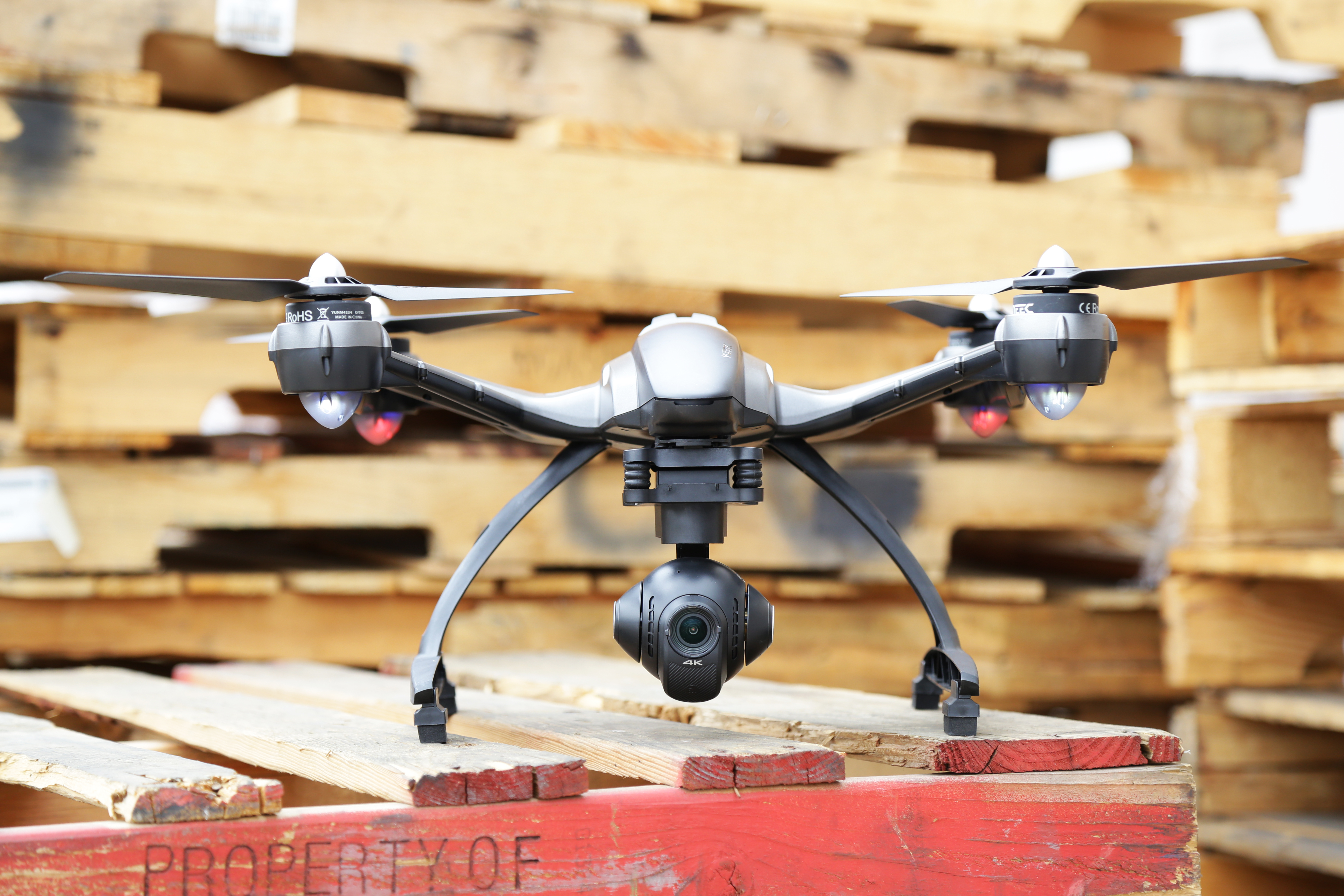
The Typhoon Q500 comes in at the more affordable end of the scale in the Yuneec family, and runs with a pretty tough crowd. Overall the platform is solid, and a well-rounded drone that provides a good unit to have some fun with and does a great job of incorporating a touchscreen into the transmitter. The video and photo quality are great, and I’m a big fan of what they’ve done with the interface. While it isn’t packing the most advanced smart features on the market — I think some improvements can be made to the overall design for greater efficiency — scooping this kit up refurbished at a sub-$500 price point is a rock-solid deal.
Yuneec is by no means a newbie in the industry, with a wide lineup across several tiers of use. While they are less well-known than others in the drone field, they have more to offer than many are aware of. I hope we hear more from this brand, and keep your eyes peeled for their next big release.

